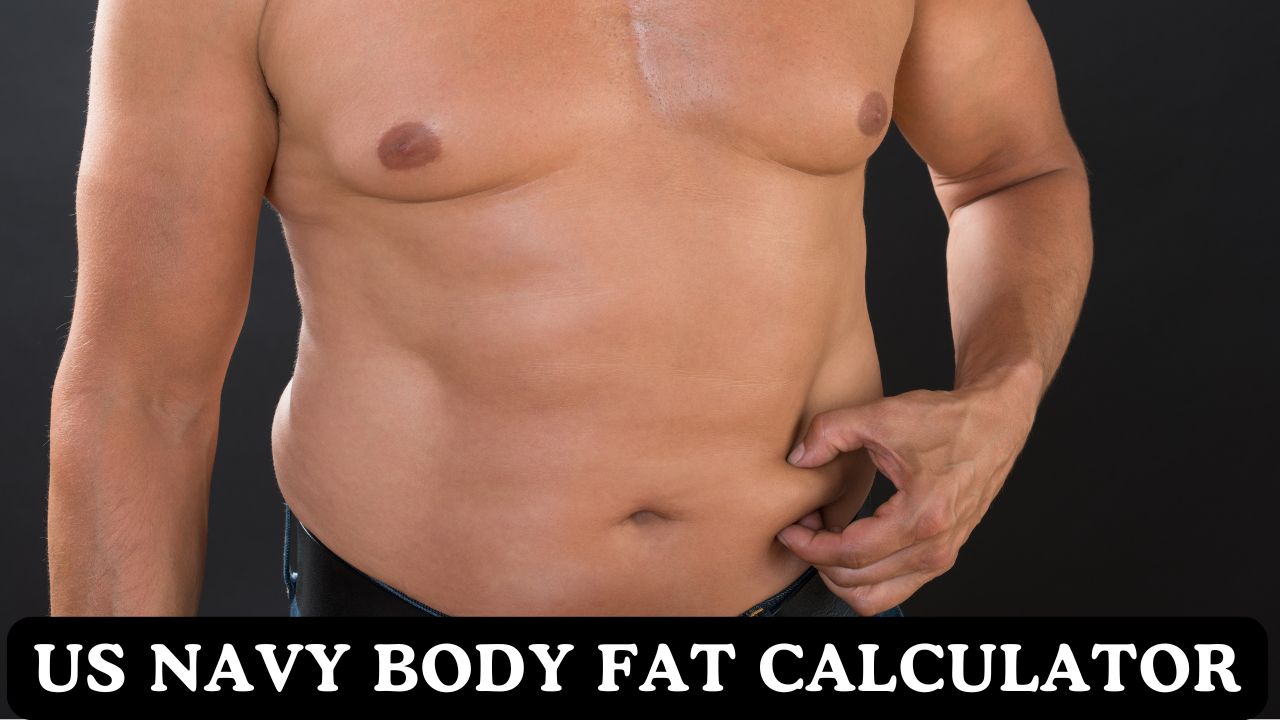US Navy Body Fat Calculator
Calculate your body fat percentage using the official US Navy circumference method for military fitness assessments

The US Navy Body Fat Method
The US Navy body fat calculation method is the official standard used by all branches of the US military for fitness assessments and body composition evaluations. Established by the US Navy Physical Readiness Program, this circumference-based method provides accurate body fat estimates within ±3-4% when measurements are taken correctly. The formula accounts for gender differences in fat distribution and has been validated through extensive military research across diverse populations.
Circumference Method Advantages
Unlike expensive methods like DEXA scans or hydrostatic weighing, the Navy method requires only a measuring tape and basic measurements. Research validation studies demonstrate its accuracy compared to more complex methods, making it ideal for field assessments, fitness evaluations, and regular monitoring. The method’s simplicity and accessibility have made it the preferred choice for military personnel, fitness professionals, and health enthusiasts worldwide.
Scientific Foundation
The Navy equations are based on extensive anthropometric studies conducted on military personnel, providing formulas specifically designed for adult populations aged 17-65. Clinical validation research confirms the method’s accuracy across different ethnicities, body types, and fitness levels. The gender-specific formulas account for physiological differences in fat distribution, with women requiring hip measurements due to gynoid fat distribution patterns.
US Navy Body Fat Formulas
• Waist = waist circumference in inches
• Neck = neck circumference in inches
• Height = height in inches
• Waist = waist circumference in centimeters
• Neck = neck circumference in centimeters
• Height = height in centimeters
Note: Same formula, different units
• Waist = waist circumference in inches
• Hip = hip circumference in inches
• Neck = neck circumference in inches
• Height = height in inches
• Waist = waist circumference in centimeters
• Hip = hip circumference in centimeters
• Neck = neck circumference in centimeters
• Height = height in centimeters
Note: Same formula, different units
US Navy Body Fat Standards by Age
| Age Group | Male Maximum (%) | Female Maximum (%) | Compliance Status | Health Category |
|---|---|---|---|---|
| 17-21 years | 22% | 33% | Navy Standard | Young Adult |
| 22-29 years | 23% | 34% | Navy Standard | Young Adult |
| 30-39 years | 24% | 35% | Navy Standard | Adult |
| 40+ years | 26% | 36% | Navy Standard | Mature Adult |
Note: These are maximum allowable body fat percentages for US Navy personnel. Exceeding these standards may result in mandatory fitness programs or administrative actions in military settings.
Body Fat Classification Standards
| Classification | Men (%) | Women (%) | Description | Health Implications |
|---|---|---|---|---|
| Essential Fat | 2-5% | 10-13% | Minimum for basic physiological functions | Critical for organ protection and hormone production |
| Athletes | 6-13% | 14-20% | Typical for competitive athletes | Optimal for performance and health |
| Fitness | 14-17% | 21-24% | Fit individuals, good health | Excellent health benefits, low disease risk |
| Average | 18-24% | 25-31% | Typical American adult | Acceptable health range, some improvement beneficial |
| Obese | 25%+ | 32%+ | Associated with health risks | Increased risk of cardiovascular disease, diabetes |
Accurate Measurement Techniques
📏 Height Measurement
Proper Technique: Stand straight against a wall with feet together, heels touching the wall.
Remove shoes and ensure your head, shoulders, and buttocks are in contact with the wall.
Look straight ahead with chin parallel to the floor. Measure to the nearest 0.5 inch.
Common Errors: Measuring with shoes on, slouching, or tilting the head can reduce accuracy.
Consistency in measurement technique is crucial for tracking progress over time.
🔗 Neck Circumference
Proper Technique: Measure just below the Adam’s apple (laryngeal prominence) with the tape measure
perpendicular to the long axis of the neck. Keep the tape horizontal and snug but not tight.
Measure to the nearest 0.1 inch.
Critical Points: Avoid measuring too high (at the jawline) or too low (at the base of the neck).
The measurement should be taken at the narrowest point below the Adam’s apple for men and at the same relative position for women.
⚖️ Waist Circumference
Men: Measure at the narrowest point of the torso, typically at the natural waist or just above the navel.
Keep the tape horizontal and take the measurement at the end of a normal expiration.
Women: Measure at the natural waistline, which is the narrowest point between the ribcage and hips.
This is typically at the level of the navel or slightly above. Ensure the tape is snug but not compressing the skin.
📐 Hip Circumference (Women Only)
Proper Technique: Measure at the widest point of the hips and buttocks, typically 7-9 inches below the waist.
Keep the tape horizontal and parallel to the floor. Stand with feet together and weight evenly distributed.
Accuracy Tips: Wear minimal, form-fitting clothing. Take multiple measurements and use the average.
Ensure the tape measure is not twisted and maintains consistent tension around the circumference.
Method Comparison & Accuracy
| Method | Accuracy (±%) | Cost | Convenience | Equipment Required | Best Application |
|---|---|---|---|---|---|
| US Navy Method | ±3-4% | Free | High | Measuring tape | Field assessments, regular monitoring |
| DEXA Scan | ±1-2% | $50-150 | Low | Medical facility | Research, clinical assessments |
| Hydrostatic Weighing | ±2-3% | $25-75 | Low | Specialized tank | Laboratory research |
| Bioelectrical Impedance | ±3-5% | $20-200 | High | BIA scale/device | Home monitoring, gyms |
| Skinfold Calipers | ±3-5% | $10-50 | Medium | Calipers + training | Fitness assessments |
| Bod Pod | ±2-3% | $40-80 | Medium | Specialized facility | Athletic assessments |
Military Fitness Applications
🎖️ Military Service Requirements
All branches of the US military use the Navy body fat method for fitness assessments and body composition evaluations. The Navy Physical Readiness Program requires semi-annual fitness assessments including body fat measurements for personnel who exceed height/weight standards. Failure to meet body fat standards can result in mandatory fitness programs, administrative actions, or separation from service.
🏃 Physical Fitness Assessments
Military fitness assessments combine cardiovascular endurance, muscular strength, and body composition measurements. The Navy method provides a standardized approach to body fat assessment that can be administered by trained personnel in field conditions. Regular monitoring helps ensure military readiness and identifies personnel who may need additional fitness support or medical evaluation.
📊 Career Impact & Standards
Body fat standards directly impact military careers, affecting promotions, assignments, and retention. Personnel who consistently meet standards demonstrate physical readiness and discipline valued in military service. The objective nature of the Navy method ensures fair and consistent evaluation across all personnel, regardless of body type or muscle mass variations that might affect simple height/weight measurements.
Health & Fitness Optimization
🎯 Setting Realistic Goals
Gradual Reduction: Safe body fat reduction occurs at 1-2% per month through sustainable lifestyle changes.
Rapid fat loss often results in muscle loss and metabolic slowdown, making long-term maintenance difficult.
Individual Variation: Genetic factors, age, and training history influence optimal body fat levels.
Focus on health markers and performance improvements rather than achieving specific percentages that may not be
appropriate for your body type and lifestyle.
💪 Effective Strategies
Strength Training: Resistance training preserves muscle mass during fat loss and increases metabolic rate.
Compound movements like squats, deadlifts, and presses provide the greatest benefit for body composition improvement.
Cardiovascular Exercise: Combine moderate-intensity steady-state cardio with high-intensity interval training
for optimal fat burning. Aim for 150-300 minutes of moderate activity or 75-150 minutes of vigorous activity weekly.
🍎 Nutritional Considerations
Caloric Balance: Create a moderate caloric deficit (300-500 calories below maintenance) for sustainable fat loss.
Extreme deficits can lead to muscle loss, metabolic adaptation, and nutritional deficiencies.
Macronutrient Distribution: Prioritize protein intake (0.8-1.2g per pound of body weight) to preserve muscle mass.
Include adequate fats (20-35% of calories) for hormone production and nutrient absorption.
Scientific Research & Validation
Original Navy Method Research
“Generalized body composition prediction equation for men using simple measurement techniques”
NCBI PubMed Research –
The foundational research by Hodgdon and Beckett established the Navy method through extensive validation studies
on military personnel. Their work demonstrated the method’s accuracy compared to hydrostatic weighing and
established the mathematical formulas still used today for military fitness assessments.
Military Fitness Standards
US Navy Physical Readiness Program
Official Navy Documentation –
The Navy’s official fitness program documentation outlines the implementation and standards for body fat assessments.
This comprehensive program ensures military readiness through standardized fitness evaluations that include
cardiovascular endurance, muscular strength, and body composition measurements.
Validation Studies
Comparative Accuracy Research
Body Fat Percentage Research –
Multiple validation studies have confirmed the Navy method’s accuracy within ±3-4% when compared to gold standard methods.
The method’s reliability across different populations and its practical application in field conditions have made it
the preferred choice for military and civilian fitness assessments worldwide.
Frequently Asked Questions
How accurate is the US Navy body fat method?
The Navy method is accurate within ±3-4% when measurements are taken correctly. This level of accuracy is comparable to more expensive methods like bioelectrical impedance and skinfold calipers, making it an excellent choice for regular monitoring and fitness assessments.
Why do women need hip measurements but men don’t?
Women typically store more fat in the hip and thigh region (gynoid fat distribution) compared to men who store more fat in the abdominal area (android fat distribution). The hip measurement accounts for this gender difference in fat distribution patterns, improving accuracy for female body fat calculations.
Can I use this method if I’m very muscular?
Yes, the Navy method is less affected by muscle mass than BMI calculations. However, extremely muscular individuals may have slightly higher body fat estimates due to the method’s assumptions about body density. For competitive bodybuilders or powerlifters, DEXA scans may provide more accurate results.
How often should I measure my body fat?
For general fitness monitoring, monthly measurements are sufficient. For active weight loss or fitness programs, bi-weekly measurements can help track progress. Daily measurements are not recommended as body fat changes slowly and measurement errors can create misleading day-to-day variations.
What’s the difference between the Navy method and BMI?
BMI only considers height and weight, while the Navy method measures actual body composition. BMI can misclassify muscular individuals as overweight or obese, while the Navy method provides a more accurate assessment of body fat regardless of muscle mass. This makes it superior for fitness and health evaluations.
⚕️ Medical Disclaimer
This US Navy body fat calculator provides estimates based on established military standards and should not replace professional medical advice. Individual body composition can vary significantly due to genetics, medical conditions, medications, and other factors. The Navy method provides population averages and may not accurately reflect individual variations in body composition. Consult with healthcare professionals, registered dietitians, or certified fitness professionals before making significant dietary or exercise changes, especially if you have pre-existing health conditions, are pregnant, breastfeeding, or taking medications that may affect body composition. The calculations provided are for educational purposes and general fitness guidance only.
Related
- Barbell Racking Calculator
- Push-Up Weight Calculator
- Wilks Calculator
- One-Rep (1RM) Max Calculator
- One-Rep Max (1RM) Bench Press Calculator
References
- Peterson DD. History of the U.S. Navy Body Composition program. Mil Med. 2015 Jan;180(1):91-6. doi: 10.7205/MILMED-D-14-00266. PMID: 25562863.
- Shake, Caron & Schlichting, Christine & Mooney, Loren & Callahan, Arthur & Cohen, Mark. (1993). Predicting Percent Body Fat from Circumference Measurements. Military medicine. 158. 26-31. 10.1093/milmed/158.1.26.
- David D. Peterson, History of the U.S. Navy Body Composition Program, Military Medicine, Volume 180, Issue 1, January 2015, Pages 91–96, https://doi.org/10.7205/MILMED-D-14-00266

Manish is a NASM-certified fitness and nutrition coach with over 10 years of experience in weight lifting and fat loss fitness coaching. He specializes in gym-based training and has a lot of knowledge about exercise, lifting technique, biomechanics, and more.
Through “Fit Life Regime,” he generously shares the insights he’s gained over a decade in the field. His goal is to equip others with the knowledge to start their own fitness journey.
